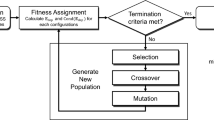Abstract
For reducing the risk of skin injury during interventional radiology (IR) procedures, it has been suggested that physicians track patients’ exposure doses. The metal-oxide semiconductor field effect transistor (MOSFET) dosimeter is designed to measure patient exposure dose during radiotherapy applications at megavoltage photon energies. Our purpose in this study was to evaluate the feasibility of using a MOSFET dosimeter (OneDose system) to measure patients’ skin dose during exposure to diagnostic X-ray energies used in IR. The response of the OneDose system was almost constant at diagnostic X-ray energies, although the sensitivity was higher than that at megavoltage photon energies. We found that the angular dependence was minimal at diagnostic X-ray energies. The OneDose is almost invisible on X-ray images at diagnostic energies. Furthermore, the OneDose is easy to handle. The OneDose sensor performs well at diagnostic X-ray energies, although real-time measurements are not feasible. Thus, the OneDose system may prove useful in measuring patient exposure dose during IR.






Similar content being viewed by others
References
International Commission on Radiological Protection. ICRP publication 85: Avoidance of radiation injuries from medical interventional procedures. Ann ICRP 2001;30/2:Publication 85.
Hirshfeld JW, Balter S, Brinker JA. ACCF/AHA/HRS/SCAI clinical competence statement on physician knowledge to optimize patient safety and image quality in fluoroscopically guided invasive cardiovascular procedures: A report of the American College of Cardiology Foundation/American Heart Association American. College of Physicians Task Force on Clinical Competence and Training. J Am Coll Cardiol. 2004;44:2259–82.
Wong L, Rehm J. Images in clinical medicine: radiation injury from a fluoroscopic procedure. N Engl J Med. 2004;350:e23.
Chida K, Saito H, Zuguchi M, Shirotori K, Kumagai S, Nakayama H, et al. Does digital acquisition reduce patients’ skin dose in cardiac interventional procedures? An experimental study. Am J Roentgenol. 2004;183:1111–4.
Chida K, Kagaya Y, Saito H, Takai Y, Takahashi S, Yamada S, et al. Total entrance skin dose: An effective indicator of the maximum radiation dose to a patient’s skin during percutaneous coronary intervention. Am J Roentgenol. 2007;189:W224–7.
Chida K, Saito H, Otani H, Kohzuki M, Takahashi S, Yamada S, et al. Relationship between fluoroscopic time, dose-area product, body weight, and maximum radiation skin dose in cardiac interventional procedures. Am J Roentgenol. 2006;186:774–8.
Kohno R, Hirano E, Nishio T, Miyagishi T, Goka T, Kawashima M, et al. Dosimetric evaluation of a MOSFET detector for clinical application in photon therapy. Radiol Phys Technol. 2008;1:55–61.
Marcie S, Charpiot E, Bensadoun RJ, Ciais G, Herault J, Costa A, et al. In vivo measurements with MOSFET detectors in oropharynx and nasopharynx intensity-modulated radiation therapy. Int J Radiat Oncol Biol Phys. 2005;61:1603–6.
Ramaseshan R, Kohli KS, Zhang TJ, Lam T, Norlinger B, Hallil A, et al. Perfomance characteristics of a microMOSFET as an in vivo dosimeter in radiation therapy. Phys Med Biol. 2004;49:4031–48.
Chida K, Fuda K, Kagaya Y, Saito H, Takai Y, Kohzuki M, et al. Influence of the target vessel on the location and area of maximum skin dose during percutaneous coronary intervention. Acta Radiol. 2007;48:846–50.
Chida K, Saito H, Kagaya Y, Kohzuki M, Takai Y, Takahashi S, et al. Indicators of the maximum radiation dose to the skin during percutaneous coronary intervention in different target vessels. Catheter Cardiovasc Interv. 2006;68:236–41.
Hwang E, Gaxiola E, Vlietstra RE, Brenner A, Ebersole D, Browne K. Real-time measurement of skin radiation during cardiac catheterization. Cathet Cardiovasc Diagn. 1998;43:367–70.
Acknowledgments
We acknowledge Yoshiaki Morishima and Hiroo Chiba, Department of Radiology, Tohoku Employees’ Pension Welfare Hospital, Japan, for their invaluable assistance. The authors thank Mrs. Tomoko Sasaki for secretarial work.
Author information
Authors and Affiliations
Corresponding author
About this article
Cite this article
Chida, K., Inaba, Y., Masuyama, H. et al. Evaluating the performance of a MOSFET dosimeter at diagnostic X-ray energies for interventional radiology. Radiol Phys Technol 2, 58–61 (2009). https://doi.org/10.1007/s12194-008-0044-z
Received:
Revised:
Accepted:
Published:
Issue Date:
DOI: https://doi.org/10.1007/s12194-008-0044-z




